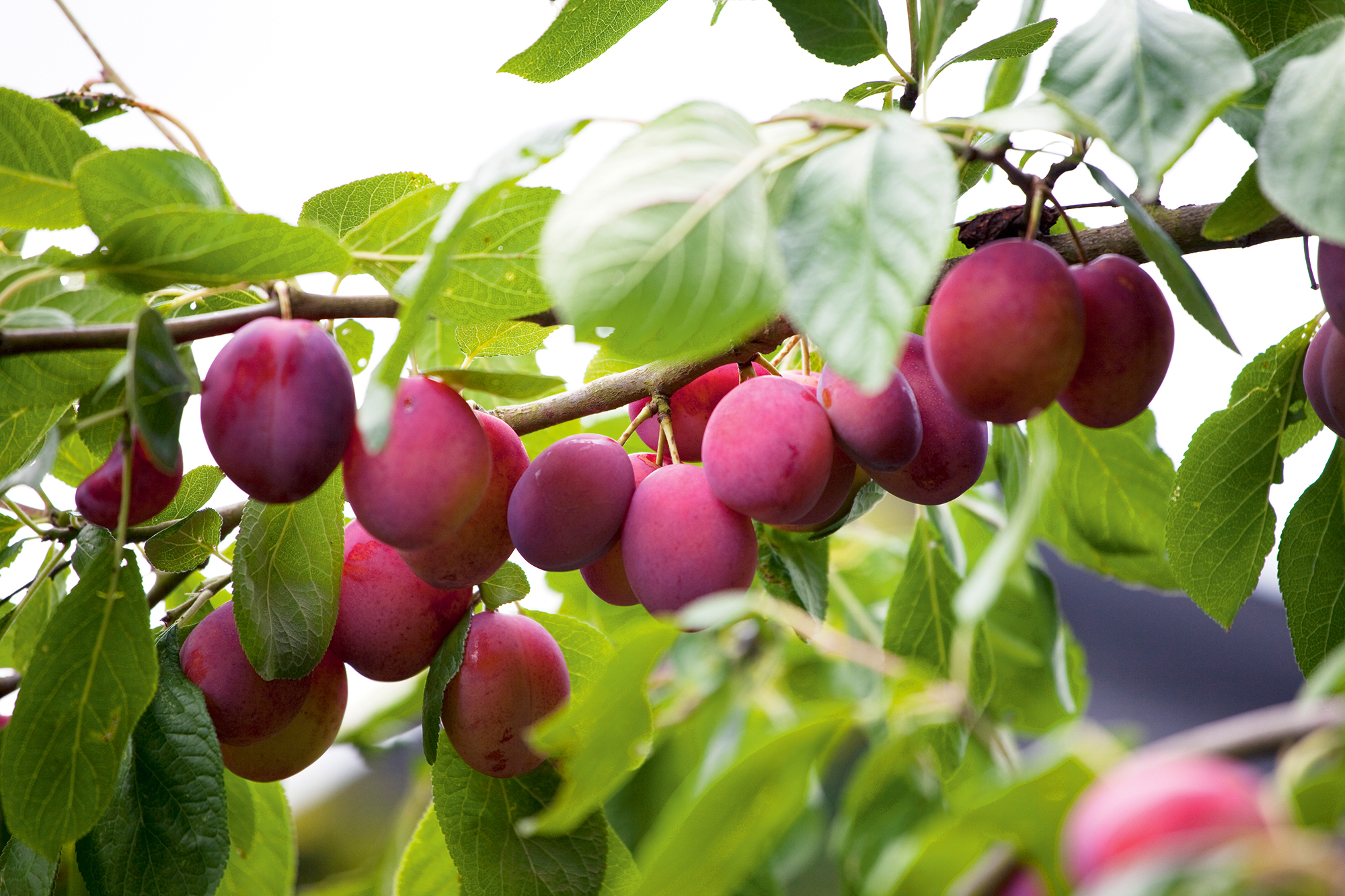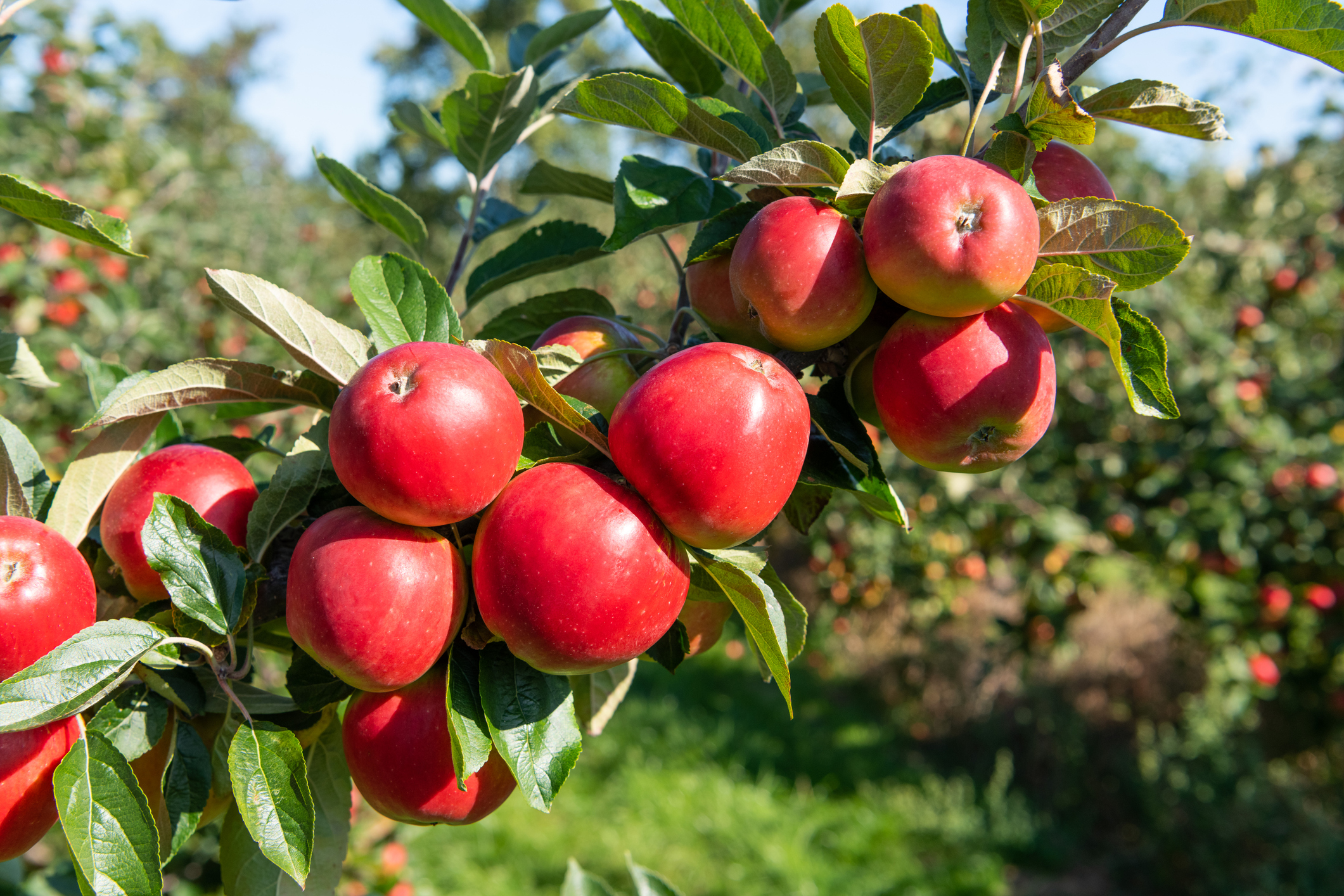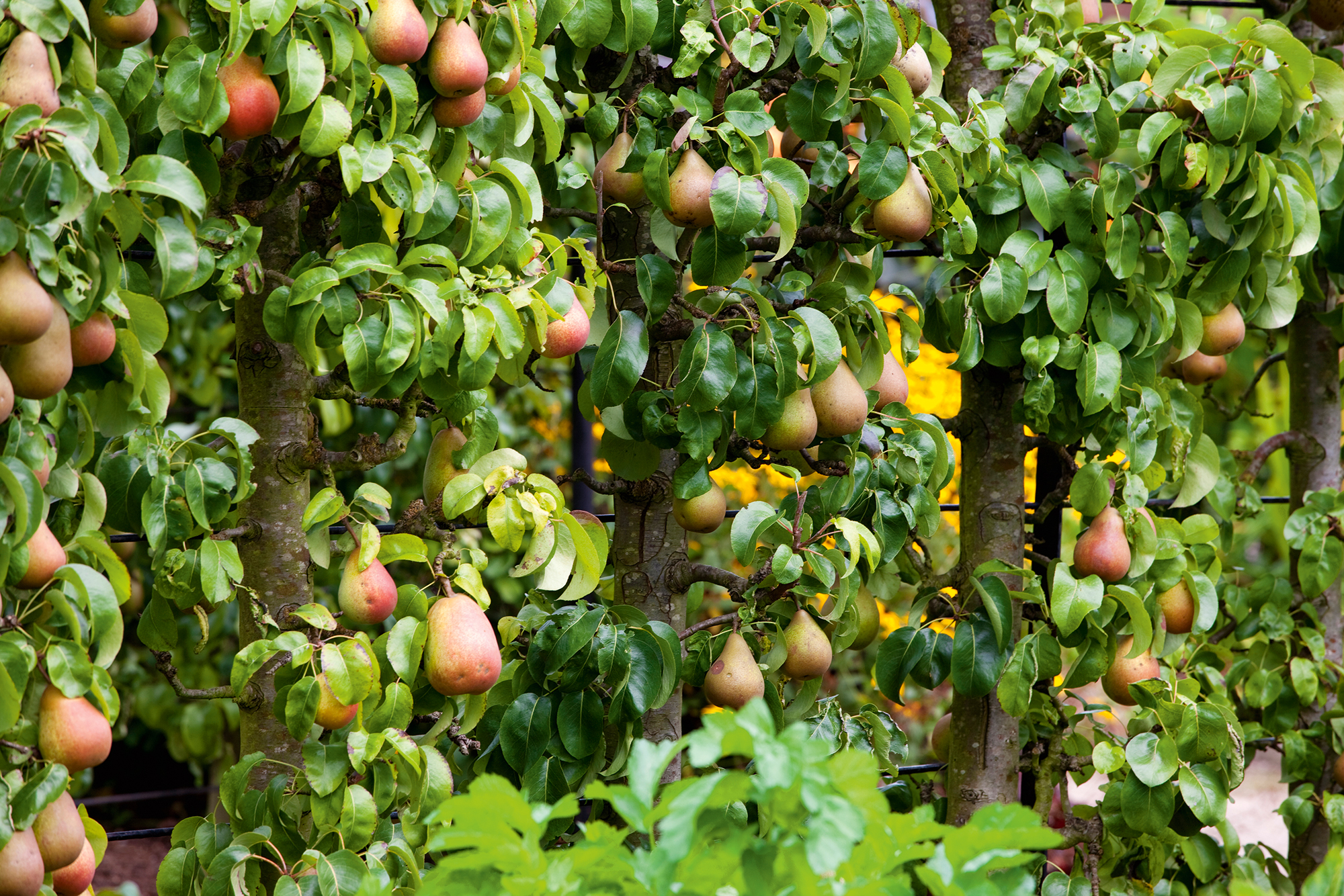How to plant fruit trees – an expert guide
Discover how to plant fruit trees to create your own backyard orchard and enjoy a delicious harvest for years to come


It’s vital to know how to plant fruit trees the right way, to ensure a healthy plant that yields a good crop.
Fruit trees are one of the best garden ideas to include as they bring so much joy. From the crunchiest apples to the juiciest plums, nothing tastes as sweet as fruit you have grown yourself, and it will be much fresher than store-bought produce.
However, when planning a kitchen garden, it's important to only select the best fruit trees that will grow well in your location and climate.
'Start by asking your local county extension specialists, who often have the most knowledge about which varieties thrive in your area,' says Pete Smith, arborist and urban forestry program manager at Arbor Day Foundation. 'They will also be able to advise on whether you require two different varieties to cross-pollinate and bear fruit.'
In addition, you can check the plant hardiness zone map to find out which fruit trees are compatible for your specific location.
'Make sure you obtain quality plant stock from a reputable nursery,' adds Smith. 'Oftentimes the trees are bare-root specimens, which means there is no soil or containers around the roots, and they are usually less expensive.'

How to plant fruit trees – step by step
‘Learning how to plant fruit trees isn't that much different from knowing how to plant a tree of any other type,’ says Lisa Tadewaldt,’ arborist and owner of Urban Forest Pro.
Design expertise in your inbox – from inspiring decorating ideas and beautiful celebrity homes to practical gardening advice and shopping round-ups.
‘But you need to get the process right to ensure the tree will survive and flourish, and produce as much fruit as possible.’
Bear in mind some fruit trees have their own specific requirements – there may be small differences between how to plant an apple tree versus another type of fruit, so do check the instructions supplied with your tree.
- Dig over the soil in your chosen location and remove any big stones. ‘Avoid amending the soil too much, as you want the tree to grow and thrive in the existing soil rather than add in a lot of nutrient-rich soil, which can keep the roots from branching out,’ says Tadewaldt. ‘Light mixing is fine, but don't go overboard and ensure local soil from your hole remains the majority.’
- Using the pot as a size guide, dig a hole for your tree. 'When digging a hole for your fruit trees, dig a saucer rather than a cylinder,’ says Christy Wilhelmi, author of Grow Your Own Mini Fruit Garden. ‘The bottom of the saucer should be only as deep as the soil root ball, and the diameter of the saucer should be at least 3-5 feet wide, sloping gently from soil surface to base.’
- Remove the tree from the container. ‘Scour the sides of the root wad 1-2 inches deep with the side of your shovel,’ says Tadewaldt. ‘You can further encourage this with your fingers, as the goal is to loosen that outer layer of the soil wad.' Bare-root trees won't have any soil.
- Place the tree in your prepared hole. ‘Follow the planting instructions to be sure to plant the sapling at the correct depth in the planting hole,’ says Smith. ‘You must never bury the graft union, which can be identified as a raised bulge that must be above the soil when planted.’
- ‘Position the graft to the north, if it is a single graft. If planting multi-graft trees position the smallest graft or scion to the south,’ says Suzanne Fellows from Peaceful Valley Farm and Garden Supply.
- ‘Fill the dirt derived from digging the hole back in around the trunk of the tree and stomp the soil well while keeping the tree straight to compact it,’ says Tammy Sons from Tennessee Nursery.
- It’s important to stake your tree when planting, to protect it from wind damage. There are several ways to do this, but the most common method is to insert a stake before filling the hole with soil. The stake should come up a third of the tree’s height.
- If training your fruit tree as an espalier or cordon, put your trellis in place now. There are many beautiful vegetable garden trellis ideas available.
- Give your tree a good watering, and then water regularly until it is established.

Where to plant fruit trees
The best place to plant your fruit trees will depend on the light and sheltering requirements of the specific variety. However, most fruit trees prefer full sun. ‘Fruit trees should get at least eight hours of direct sun per day,’ says Fellows.
‘In general, the best site for fruit trees is a sunny, sheltered spot with well-drained neutral to slightly acidic soil; they are not well suited to extremely alkaline soils,’ says Period Living's gardens expert Leigh Clapp.
You should also consider how your fruit tree's position might affect garden maintenance. ‘Decide on a planting location where the trees can grow and bear fruit without causing a mess near your home landscape,’ adds Smith.

When to plant fruit trees
The best time to plant fruit trees is when they are dormant in winter.
‘Bare root trees should be planted from November to early spring, while container-grown plants can be planted any time of year – but it is best done in winter,’ says Clapp.
Winter is also the most cost-effective time to plant trees. ‘You can pick up wintertime bare-root fruit trees for less than half the price of springtime pot-grown ones,’ adds Clive Harris, founder of DIY Garden.

Planting fruit trees in pots
Dwarf fruit trees are some of the best trees to grow in pots and are fantastic small garden ideas as they can be positioned on the patio or even a balcony.
‘Size really matters when it comes to container-grown fruit trees,’ says Harris.
‘Buy the largest container you can afford and plant your bare-root tree in winter using lots of organic mulch and a few handfuls of garden soil to introduce healthy bacteria and earthworms.'
When planting fruit trees in pots, it is important to stake them to provide protection against prevailing winds. Most fruit trees should be placed in a sheltered spot in full sun – but check the requirements of your plant.
‘It is essential that you water and feed container-grown fruit trees in spring and summer because dry trees will shed their blossom in a bid to stay alive,’ adds Harris. ‘Check them daily and feed them once a week with a specialist fruit tree fertilizer.’
How do you prepare the soil for planting fruit trees?
To prepare the soil for planting fruit trees, first learn how to test the pH level of soil. ‘You can do this with a home test kit, or by sending a soil sample to be analysed in laboratory conditions at your local university,’ says Alison Hilton, plants and trees expert at The Yard and Garden.
‘Ideally you would choose fruit trees to suit your natural soil pH, but it is possible to can amend it to a degree using lime or acidifier. For example, apple trees enjoy 5.5-6.5 pH, while plum trees prefer 6.0-8.8 pH – so get the pH right, and you will be rewarded every season.’
While minor pH adjustments are possible, if your soil type is completely at odds with the needs of the tree, then choose a dwarf variety that you can grow in a container.
It’s also important to lightly improve the soil with compost, to ensure your tree gets the nutrients it needs to thrive. ‘Amend the entire soil area with compost, rather than just filling the hole with potting soil or compost,’ says Wilhelmi. ‘That will encourage tree roots to grow into existing soil instead of circling around in the hole.’

How far apart do fruit trees need to be planted?
How far apart fruit trees need to be planted depends partly on whether they are being trained to grow up a trellis, or require cross-pollination.
'Fruit trees should not be planted too close together to avoid root competition and to allow light to reach the ground,' says Clapp.
'In general, they need to be around 10-30 feet apart. Allow at least 6ft between espaliers and 2ft between cordons.'
What fruit trees should be planted next to each other?
Which fruit trees should be planted next to each other depends largely on whether your chosen tree needs to be cross-pollinated. If so, you will need at least two varieties.
‘Self-fertile trees won’t need another nearby for cross-pollination to generate fruit,' but pollinating ones will need at least one companion tree nearby,' says Clapp.
For example, when growing apples, a crab apple tree will pollinate with most varieties.
How to care for fruit trees
A key part of learning how to plant fruit trees is knowing how to look after them once they are in the ground.
When your fruit tree is first planted, it’s important to keep it well watered until it is established. ‘Irrigate well for the first week in particular, watering once daily,’ says Sons.
Check the fertilizing requirements for your particular fruit tree to see if it needs any particular feeding regime.
Many fruit trees will benefit from an annual mulch. ‘If mulching around the tree, do not allow mulch to touch the tree trunk,’ says Fellows.
Pruning to make major changes to the tree’s shape is best performed in the winter, when the plant is dormant and the leaves have fallen, so you can get a good sense of the overall shape.
You can also prune a fruit tree in the spring and summer to keep on top of excessive growth and to help train it.

Melanie has worked in homes and gardens media for two decades. Having previously served as Editor on Period Living magazine, and worked on Homes & Gardens, Gardening Etc, Real Homes, and Homebuilding & Renovating, she is now focusing on her passion for gardening as a Senior Editor at Gardening Know How. As a keen home grower, Melanie has experimented with pretty much every type of vegetable at some point – with mixed results. Often it is the simplest things that elude you, which may explain why she just can't seem to master zucchinis.